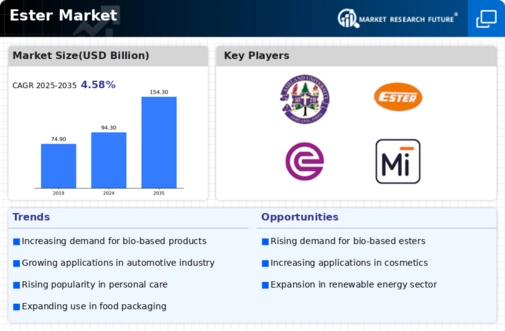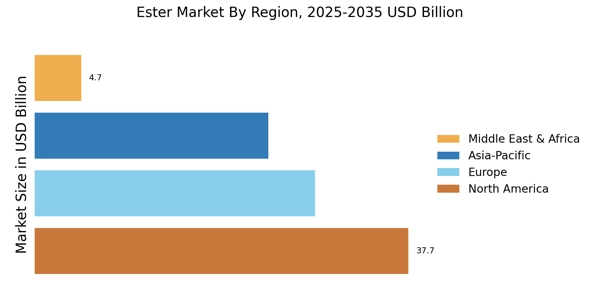Leading market players invested heavily in research and Development (R&D) to scale up their manufacturing units and product lines, which will help the Ester Market grow worldwide. Market participants are also undertaking various organic or inorganic strategic approaches to strengthen and expand their footprint, with important market developments including new product portfolios, contractual deals, mergers and acquisitions, capital expenditure, higher investments, and strategic alliances with other organizations. Businesses are also coming up with marketing strategies such as digital marketing, social media influencing, and content marketing to increase their scope of profit earnings.
The Ester industry must offer cost-effective and sustainable options to survive in a highly fragmented and dynamic market climate.
Manufacturing locally to minimize operational expenses and offer aftermarket services to customers is one of the key business strategies organizations use in the Ester industry to benefit customers and capture untapped market share and revenue. The Ester industry has recently offered significant advantages to the construction & building industry. Moreover, more industry participants are utilizing and adopting cutting-edge technology has grown substantially. Major players in the Ester Market, including Ashland (U.S.), DAK Americas (U.S.), Esterchem Ltd. (U.K), Huntsman International LLC (U.S.), BASF SE (Germany), Evonik (Germany), Sigma-Aldrich Co.
LLC. (U.S.), U-PICA Company.Ltd. (Japan), Michelman, Inc. (U.S.), NOF CORPORATION. (Japan), and Fushun Anxin Chemical Co., Ltd. (China) is attempting to expand market share and demand by investing in research and development (R&D) operations to produce sustainable and affordable solutions.
Mitsubishi Chemical Corporation is a company that makes chemicals. The company creates, manufactures, and distributes health and performance care goods, building supplies, and other substances. They offer building, medicinal, power, and petrochemical services. They provide a wide range of goods, from components to useful goods, to help build the basis of many industries. Mitsubishi Chemical Corporation confirmed the inauguration of a new sugar ester manufacturing unit at its Fukuoka location in August 2021. The newly constructed plant will increase the company's manufacturing capacity to fulfill the increasing need of the dietary supplement businesses, wherein sugarcane ester is mostly utilized.
Optimus Technologies leads the industry in EPA-compliant biodiesel replacement technologies for moderate and heavy-duty vehicles. It is a Pittsburgh, Pennsylvania-based sustainable energy technology startup. The Vector System, an innovative fuel system, is manufactured by Optimus. In March 2021, Optimus Technologies collaborated with Renewable Energy Group Inc. With this collaboration, biofuel is provided to fleets across America. Due to the novel Optimus, the Internet, biodiesel can now be utilized in vehicles such as B100 or 100% mixed biodiesel.


















Leave a Comment